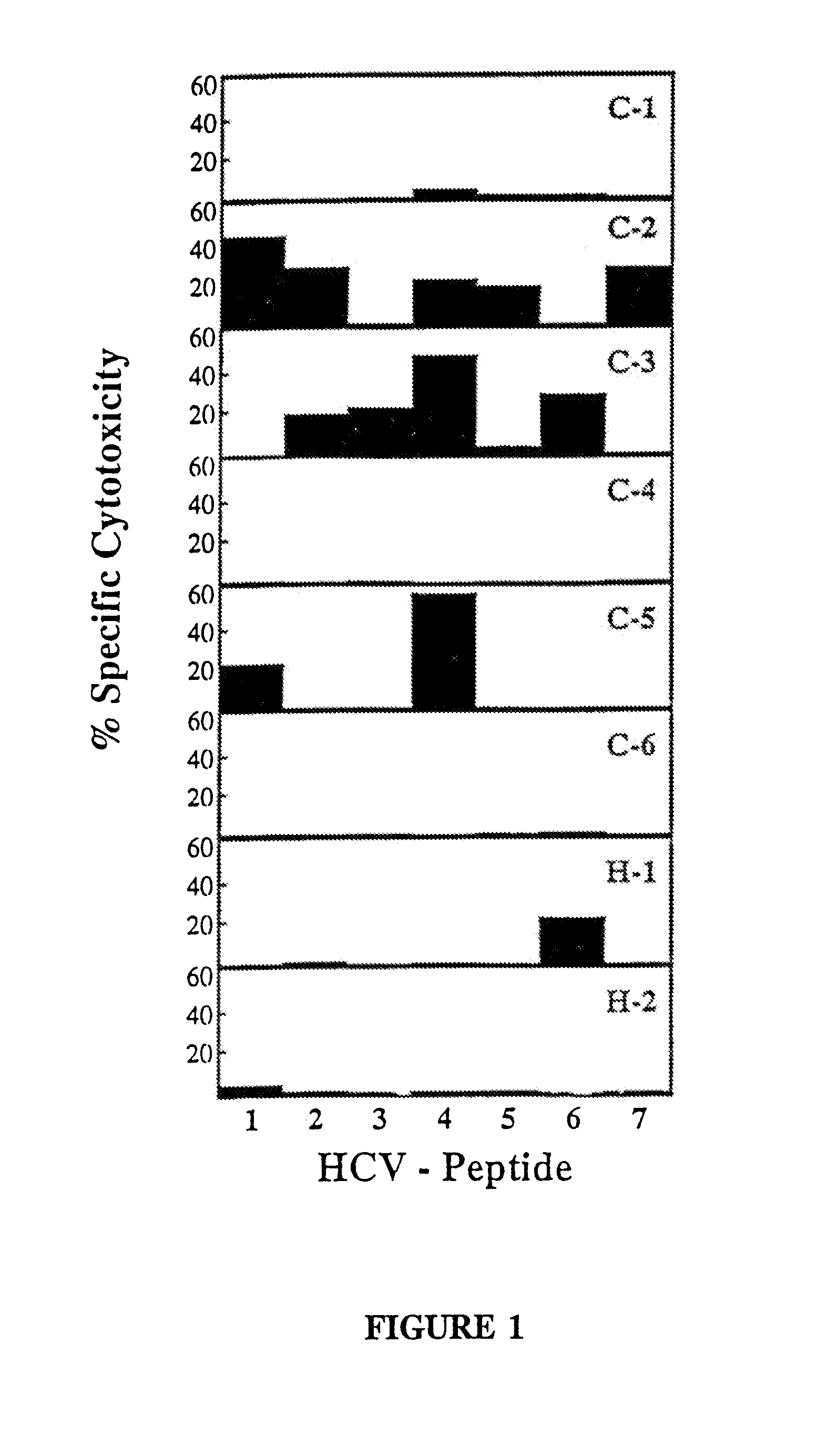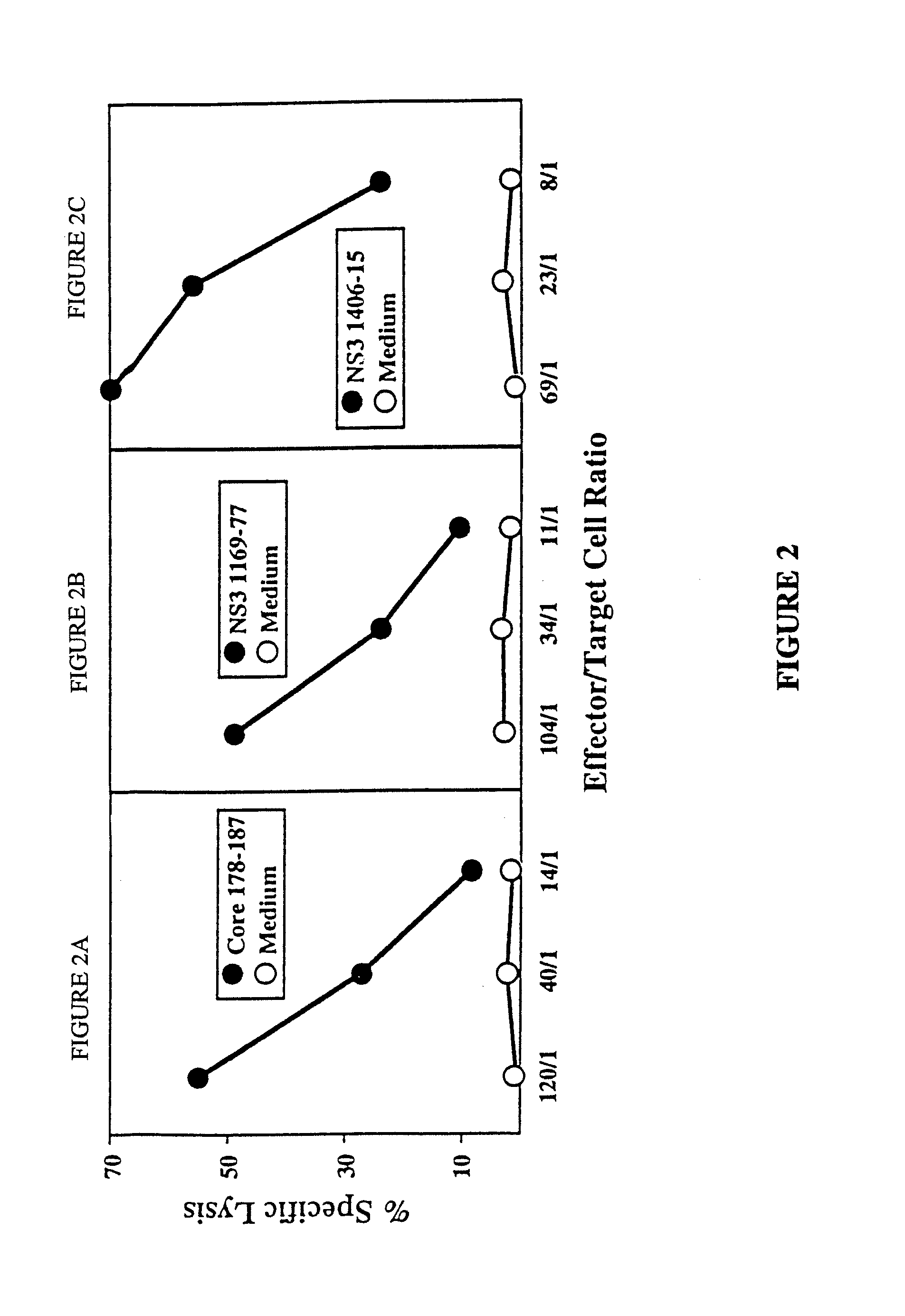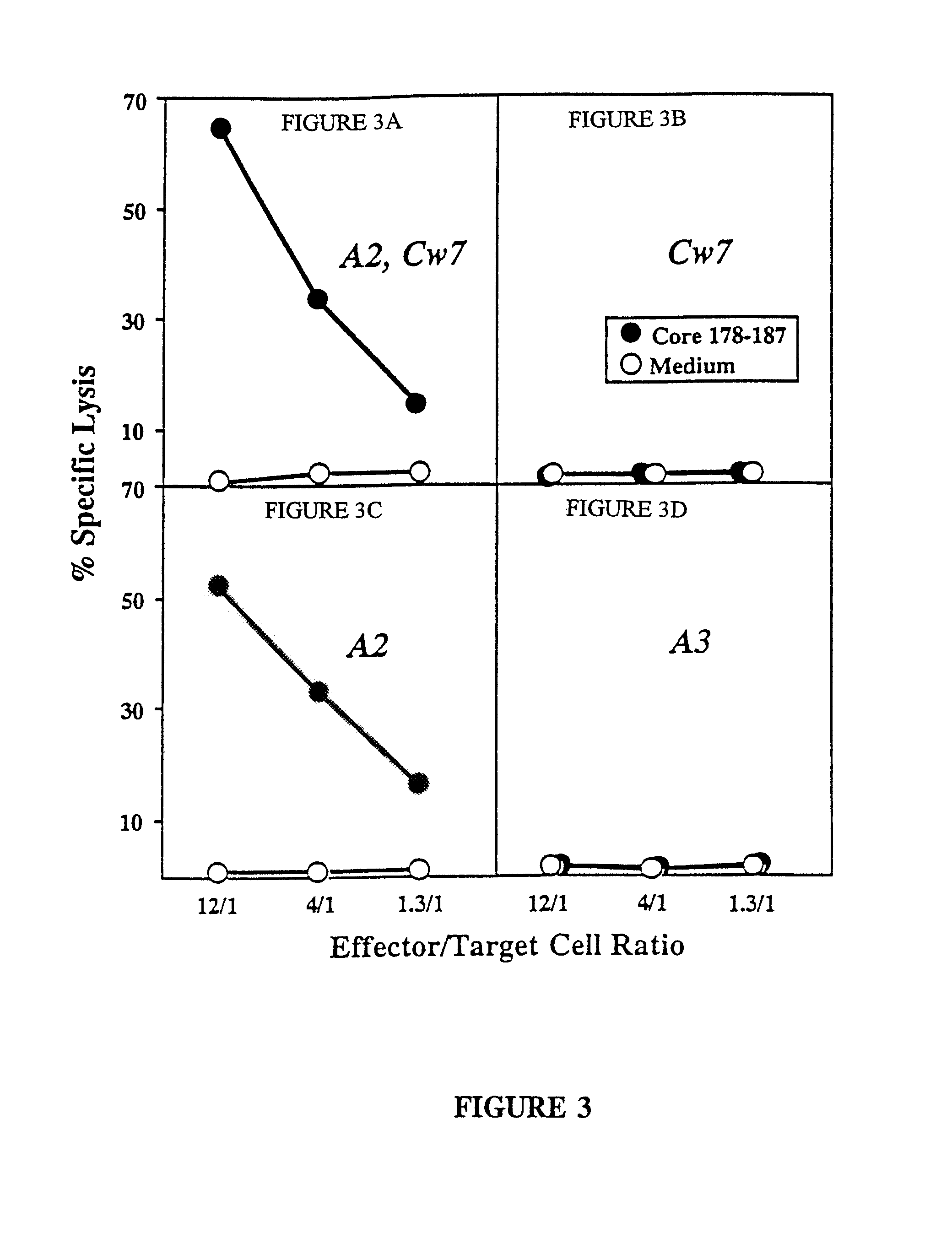Hepatitis C virus-derived peptides capable of inducing cytotoxic T lymphocyte responses
a cytotoxic t lymphocyte and c virus technology, applied in the field of hepatitis c virus-derived peptides capable of inducing cytotoxic t lymphocyte responses, can solve the problems of hcv infection chronic or acute, no cure currently available for treatment, and hcv direct cytopathic effect for host liver cells analysis hampered, so as to strengthen or boost the cellular immune system
- Summary
- Abstract
- Description
- Claims
- Application Information
AI Technical Summary
Benefits of technology
Problems solved by technology
Method used
Image
Examples
example 1
[0104]This example illustrates the identification of peptides that were tested for capability to induce HCV specific responses.
[0105]The published HCV-1 amino acid sequence (Choo et al., Proc. Natl. Acad. Sci. USA, 88, 2451–2455 (1991)) was scanned for the presence of the HLA-A2.1 binding motif XLXXXXXXV or XLXXXXXXXV, which sequence is a necessary but not sufficient characteristic for class I restricted CTL stimulation, as described by Falk et al., Nature, 351, 290–296 (1991). From this scan, 53 peptides of 9 or 10 amino acid residues each were identified as putative CTL stimulators. The identified sequences were synthesized by Chiron Mimotopes (Clayton, Australia). The 53 peptides are listed hereinbelow, wherein the single-letter code for amino acids is used: A, Ala; C, Cys; D, Asp; E, Glu; F, Phe; G, Gly; H, His; I, Ile; K, Lys; L, Leu; M, Met; N, Asp; P, Pro; Q, Gln; R, Arg; S. Ser; T, Thr; V, Val; W, Trp; Y, Tyr. The peptides marked with a dagger (†) were found to represent a C...
example 2
[0108]This example sets forth methods used to identify whether a particular polypeptide was able to induce a HCV-specific response in cytotoxic T lymphocytes.
[0109]Peripheral blood mononuclear cells (“PBMC”) taken from patients afflicted with chronic hepatitis C infection were used to assay CTL-inducing activity of the identified polypeptides. Eight patients were identified who were HLA-A2 positive, as determined by standard micro cytotoxicity tests using HLA typing trays (One Lambda, Canoga Park, Calif.). Each of these patients had chronic hepatitis C infection based on standard clinical parameters and confirmed by liver biopsy, where chronic active hepatitis (“CAH”) was in evidence with or without cirrhosis (“C”). Serological assays using the second-generation (c200 / c22-3) Ortho HCV ELISA test system (Ortho Diagnostics, Inc., Raritan, N.J.) were conducted as well. The presence of serum HCV RNA was also detected with a “nested” cDNA polymerase chain reaction assay with primers sele...
example 3
[0121]This example illustrates results of studies that demonstrate HCV-specific responses in cytotoxic T lymphocytes by particular polypeptides and that characterize cytotoxic T lymphocyte lines and clones so identified.
[0122]CTL response to 7 epitopes in 4 of 8 patients. As described in Example 2, PBMC were stimulated with each of the panel of 53 peptides and the cultures were tested after initial in vitro expansion for peptide specific CTL activity. A difference in the specific lysis of peptide pulsed target cells and nonpulsed target cells of 15% at an effector to target cell ratio of 40 / 1 to 1 / 80 was considered to represent a positive CTL response and was confirmed by additional rounds of restimulation and subsequent cloning. FIG. 1 demonstrates the percentage level of activity for each of the positive peptides in a bar graph where the abscissa lists the HCV peptide (identified by a number that is uncoded in the following table) and the ordinate is demarked as percentage specifi...
PUM
| Property | Measurement | Unit |
|---|---|---|
| Fraction | aaaaa | aaaaa |
| Fraction | aaaaa | aaaaa |
| Fraction | aaaaa | aaaaa |
Abstract
Description
Claims
Application Information
 Login to View More
Login to View More - R&D
- Intellectual Property
- Life Sciences
- Materials
- Tech Scout
- Unparalleled Data Quality
- Higher Quality Content
- 60% Fewer Hallucinations
Browse by: Latest US Patents, China's latest patents, Technical Efficacy Thesaurus, Application Domain, Technology Topic, Popular Technical Reports.
© 2025 PatSnap. All rights reserved.Legal|Privacy policy|Modern Slavery Act Transparency Statement|Sitemap|About US| Contact US: help@patsnap.com



